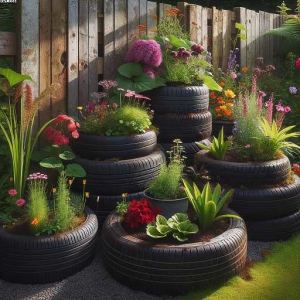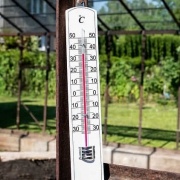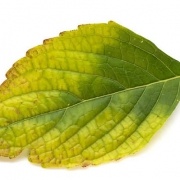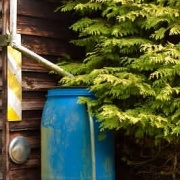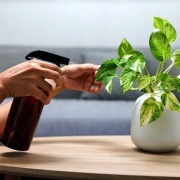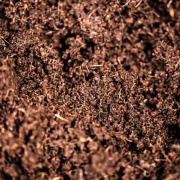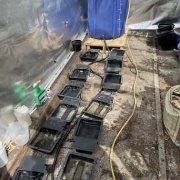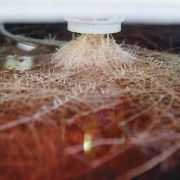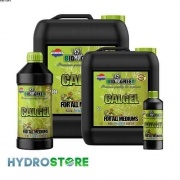BioGreen Products
BioGreen Products
When I require anything for my own personnel use when gardening then I visit my closest Hydrostore which is the Leeds store very closely followed by the Wakefield store. Importantly all the Hydrostore shops offer a great range of products for all types of growing whether indoor or out doors. So, on my first visit to the Leeds store then I was amazed at the quantity of different products that are available to the growers of almost anything.
Indeed the shelves were full of exotic sounding nutrients and plant foods. Of course there were many familiar things for sale that are used by most gardeners. As I have said then I was amazed by the selection and have taken up to challenge myself! This is to learn and write more about the wealth of products on offer to all kinds of gardeners.
Starting off with the BioGreen Range
I will be starting off with the BioGreen products. Simply because I like the particular design of the product labels along with the little green tree frog on the image. Interestingly, the BioGreen product range of nutrients offers a choice of two base systems. Including three optional supplements and six additives. Probably making this an easy system to use whilst at the same time giving the plants a top class nutrient to thrive on.
Looking at the product, I can see that the mixing method is not going to be as complicated as other brands of similar things. While browsing I did notice that some brands had many different bottles claiming each one was a benefit to maximum plant growth and development. However, BioGreen look to have simplified this by development their products with quality in mind.
Many plant compounds cannot be blended
As we know plants require many different compounds! These could include, many things such as Mycorrhizal Fungi and Rhizobacteria, Carbohydrates, Amino acids, Vitamins and many types of enzymes. So the clever scientists at the BioGreen labs have come up with a streamlined method of adding many of these things into their product range. Due to an excellent line up to cover all the necessary ingredients.
Of course “BioGreen Grow 1” is a high-quality NPK based fertiliser specifically developed to maximize your plants’ genetic potential during the vegetative and early flowering stage. Therefore this top quality fertilizer can be used for most types of plants. So, to enable a good start with maximum root growth then “Grow 1″contains enough phosphorus to initiate explosive root formation, giving the new plants a great start to life.
Like all types of nutrients please follow the instructions for the correct dosage. Importantly, as with many types of nutrients, it’s best practise to offer it in gradually increasing doses. Of course I will be trialling it on some of my hydroponic growths. So I will probably apply daily by using my plastic water tank. Urgently, like most other chemical fertilizer products, always be careful not to overdose!
BioGreen Bloom 2
So, this excellent product. BioGreen 2 is also a suitable fertilizer for use in all soil types and hydroponic use. Containing many of the micro and micro -nutrients required for full top growth and flowering of your plant. Of course this product is best switched to when the plants reach the flowering stage. This product is made from the purest materials and is totally taken up by your plants.
Because, BioGreen Bloom 2 visibly improves the condition of the flowers and fruits and helps instigate an explosion in blooming. I cant wait to start using this on my citrus trees to improve blossoming and fruit set. This product is available in Availability: 250ml, 1ltr, 5ltr and 10ltr size bottles.
BioGreen Hydro A+B
Thirdly we have “BioGreen Hydro A&B” is a two-part base nutrient made for use from the start of the vegetative phase until the end of the flowering stage. The product also comprises a wide range of micro and macro-nutrients for strong plant development. I am used to using A and B mixes from my experience in using a similar product on last years greenhouse tomato crop, producing excellent size fruit with a plentiful supply. As with many such products it is best practise to add “part A” to the water tank first mixing very well before adding the “part B” and also mixing the solution very vigorously.
- The product is a two-part base nutrient. Part A comprises an NPK ratio of 4.3-0-0. Part B has an NPK ratio of 0.6-5.2-5.7;
- The formulas are made for the vegetative stage and the flowering stage;
- The product is suitable for dripper and irrigation systems;
- It’s designed for all growing medias
BioGreen Supplements
BioGreen X-Rooting is a highly concentrated organic root stimulator containing humic acids, minerals and beneficial bacteria. Helping to preserve and balance the plant’s metabolic processes. Thus increasing the absorption of mineral nutrients by improving nutrient uptake.
BioGreen Calmag
Calmag is a high quality fully soluble additive containing a high dose of nitrogen, calcium and magnesium. Enhancing, the quality of your water and are essential to stimulate plant growth. Hence, from early vegging right through to the flush.
BioGreen PK 13/14
BioGreen PK 13/14 is of course is a highly effective potassium and phosphorus additive. Supporting, the plants during the critical stages of flowering
BioGreen X-Blast
So, “BioGreen X-Blast” is a highly potent late-flowering PK additive. Creating, maximisation of your plant’s performance during the final flowering phase. Specially, designed to push the plant to its full potential.
BioGreen Biozym
of course, “BioGreen Biozym” is a high-quality enzyme additive. Naturally, made up of 24 main enzymatic complexes. Importantly, different coenzymes have also been carefully added. Encouraging high rates of enzymatic activity.
Hydrostore-BioGreen Products- BioGreen MAM
Firstly, “BioGreen MAM” is a high-quality one-part fertiliser. So, containing, all the required macro and microelements. Required to maintain healthy mother plants from which cuttings are constantly taken from. Cant wait to try this on my Lemon tree cuttings.
Hydrostore-BioGreen Products-BioGreen Garlic
Consequently, “Biogreen Garlic” is obtained through a well-thought-out two-step production process. Consisting by placing fresh cut fermented garlic bulbs and ginger in tanks without oxygen. Leaving the mix for several months (polar extraction). Finally, followed by the a-polar extraction.
